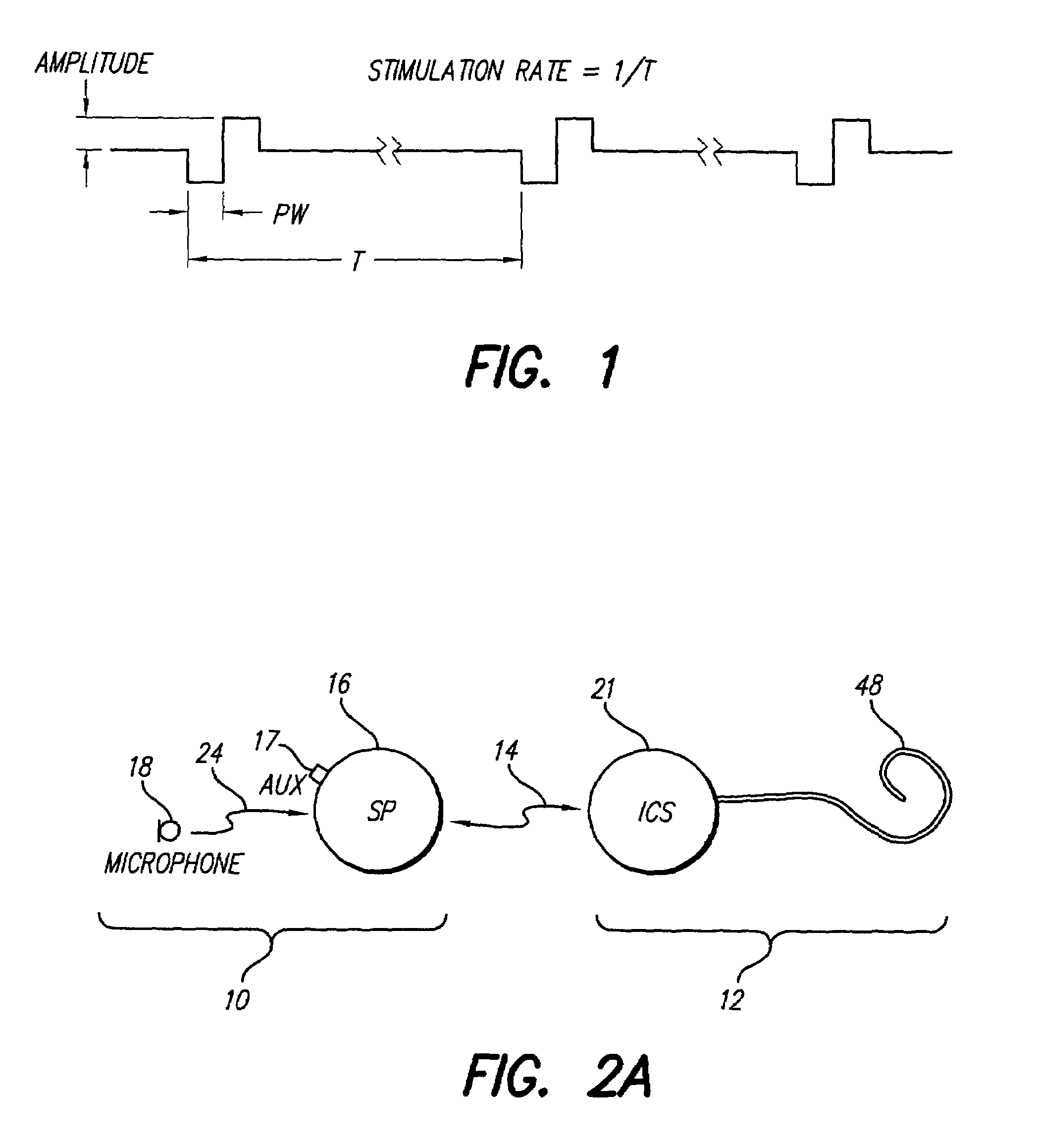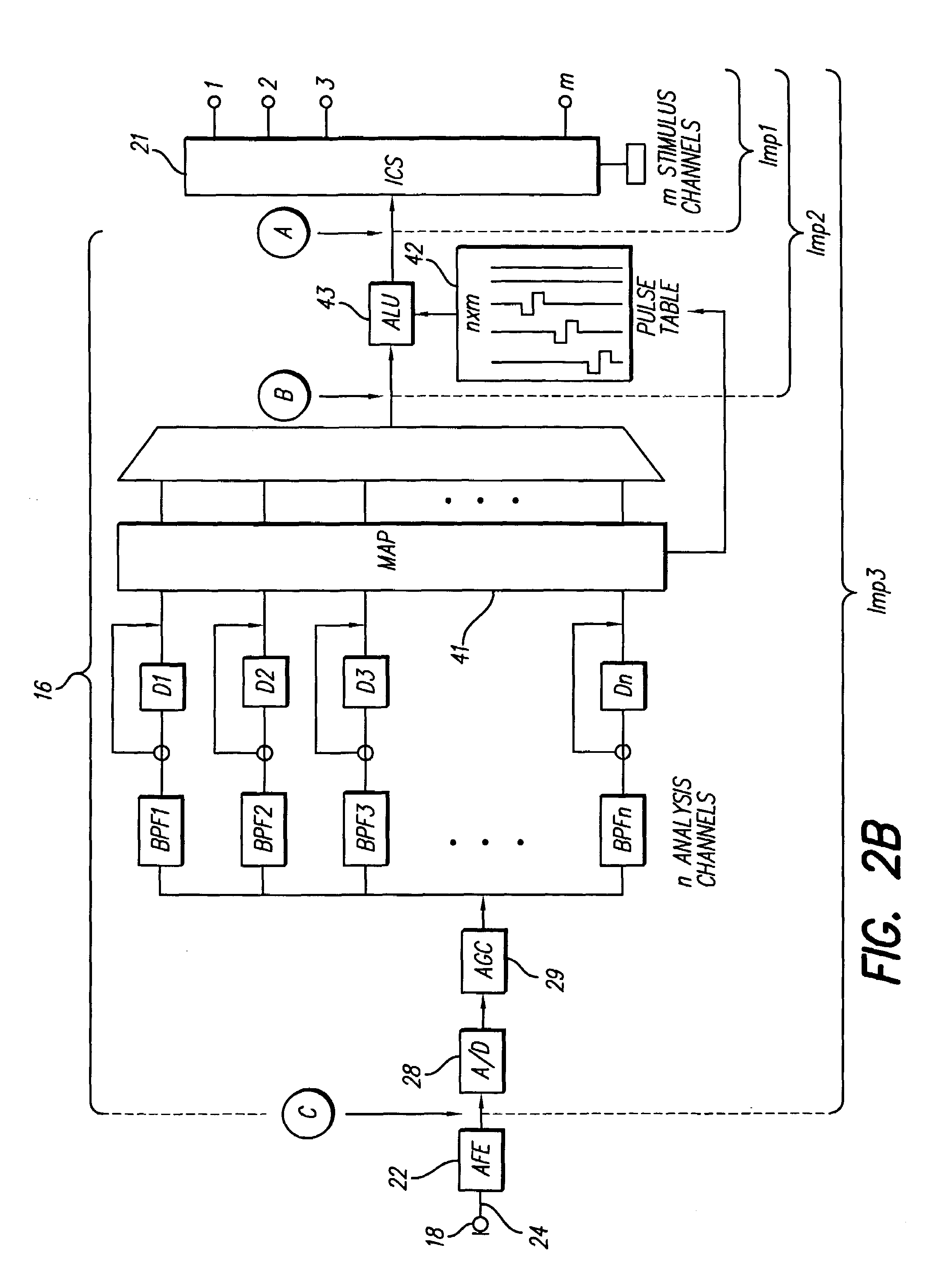Spatial decimation stimulation in an implantable neural stimulator, such as a cochlear implant
a cochlear implant and neural stimulation technology, applied in the field of implantable neural stimulation, can solve the problems of consuming excess power, consuming too much power, and implementing high-rate pulses in this region, and achieve the effect of high-rate stimulation and lower power level
- Summary
- Abstract
- Description
- Claims
- Application Information
AI Technical Summary
Benefits of technology
Problems solved by technology
Method used
Image
Examples
Embodiment Construction
[0024]The following description is of the best mode presently contemplated for carrying out the invention. This description is not to be taken in a limiting sense, but is made merely for the purpose of describing the general principles of the invention. The scope of the invention should be determined with reference to the claims.
[0025]FIG. 1 shows a waveform diagram of a biphasic pulse train, and defines stimulation rate, pulse width and pulse amplitude as those terms are used in the present application.
[0026]FIG. 2A shows a bionic ear cochlear stimulation system that includes a speech processor portion 10 and a cochlear stimulation portion 12. The speech processor portion 10 includes a speech processor (SP) 16 and a microphone 18. The microphone 18 may be connected directly to the SP 16, or may be coupled to the SP 16 through an appropriate communication link 24. The cochlear stimulation portion 12 includes an implantable cochlear stimulator (ICS) 21, and an electrode array 48. The...
PUM
 Login to View More
Login to View More Abstract
Description
Claims
Application Information
 Login to View More
Login to View More - R&D
- Intellectual Property
- Life Sciences
- Materials
- Tech Scout
- Unparalleled Data Quality
- Higher Quality Content
- 60% Fewer Hallucinations
Browse by: Latest US Patents, China's latest patents, Technical Efficacy Thesaurus, Application Domain, Technology Topic, Popular Technical Reports.
© 2025 PatSnap. All rights reserved.Legal|Privacy policy|Modern Slavery Act Transparency Statement|Sitemap|About US| Contact US: help@patsnap.com



